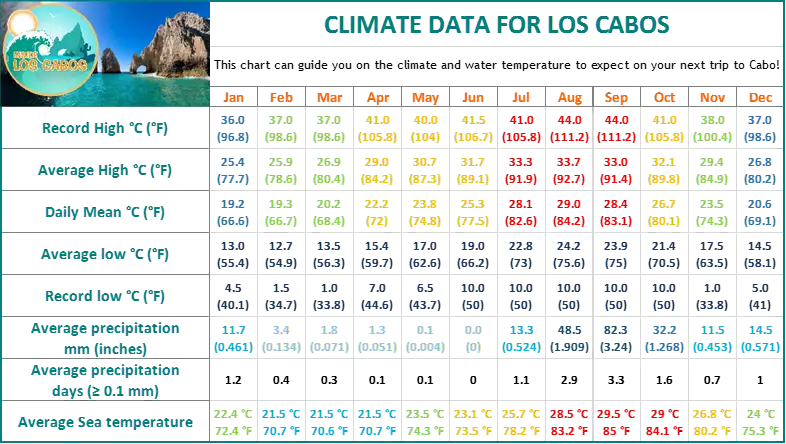History and Culture
History and Culture
Cabo San Lucas (Spanish pronunciation: ['kaßo san 'lukas] Cape Saint Luke), commonly called Cabo in American English, is a city at the southern tip of the Baja California Peninsula, in the Mexican state of Baja California Sur. Cabo San Lucas together with San José del Cabo is known as Los Cabos.
Cabo has been rated as one of Mexico's top 5 tourist destinations; it is known for its beaches, scuba diving locations, the arch (Arco de Cabo San Lucas), and marine life. The Los Cabos Corridor has become a heavily trafficked holiday destination for tourists, with numerous resorts and timeshares along the coast between Cabo San Lucas and San José del Cabo.
History and Culture
Cabo San Lucas, Mexico, was originally settled by Native American tribes including the Pericues, a mystical Native American tribe which is known for its arts as well as its extensive irrigation system. In the mid-sixteenth century, European explorers came to Cabo San Lucas, including Hernan Cortes in 1535 and Juan Rodriguez Cabrillo in 1542. The influence of these early explorers was not great; however, this began the conquering of the people of the Cabo San Lucas area.
In 1603, General Sebastian Vizcaino, under the direction of the Viceroy Count of Monterrey, launched three ships which traveled up the California coastline and named and established the places upon which they came, including Cabo San Lucas. Thus, the name of Cabo San Lucas was established more than four hundred years ago.
The actual village of Cabo San Lucas has not been in existence nearly as long as the area itself. Cabo San Lucas was more or less established as a village in 1917, when an American company moved in to the area and built a floating platform there which was used to catch tuna. This became the start of Cabo San Lucas as a fishing village, which it has been ever since. Since the 1970’s, Cabo San Lucas has also been a huge tourist draw.
TOURISM
Cabo San Lucas has become a prominent vacation and spa destination, with a variety of sites of interest and timeshares that have been built on the coast between San Lucas and San José del Cabo. The distinctive Arco de Cabo San Lucas is a local landmark.
Cabo San Lucas has the highest paying marlin tournament in the world.Despite concerns over the general safety for tourists travelling to Mexico, Cabo San Lucas remains one of the safest tourist destinations in the world.
In the winter, pods of whales can be observed in the area. They bear their calves in the warm waters of the Gulf of California after completing their 6000-mile migration from Alaska and Siberia.
DEVELOPMENT
The beaches, surfing, and sport fishing opportunities in Cabo San Lucas have attracted a great number of Mexican natives and foreigners to spend their vacations in large-scale tourist developments there. The development of Cabo's tourism industry was prompted by the Mexican government's development of infrastructure to turn Cabo San Lucas into a major center for tourism in Mexico, beginning in 1974. Upon completion of the Transpeninsular Highway, also known as the Mexican Federal Highway 1, tourist developments in Los Cabos proceeded relatively unchecked.
Until fairly recently, the unique and fragile environment of this part of Mexico was largely unprotected by law, and therefore was subjected to developers acting in concert with government agencies interested only in low-end tourist bonanzas. There is, however, a growing collection of activists and attorneys now involved in preserving many of Baja's desert habitats, marine mammals, and stretches of coastline. A number of agencies including the Gulf of California Conservation Fund and the Center for Environmental Law in La Paz are challenging the destruction of wetlands and other ecosystems from Los Cabos to Ensenada. In the face of a growing international public demand for corporate-driven ecological stewardship, higher-end resorts in the Los Cabos area are increasingly sensitive to their environmental impact, and are taking initial steps to institute sustainable practices such as reducing water usage and non-recyclable trash output.
CLIMATE
Cabo San Lucas has a desert climate.During summer, Cabo San Lucas is cooler than San José del Cabo by about -16 to -15 °C (3 to 5 °F). Sometimes during the summer, when winds blow from the Pacific Ocean instead of the Gulf of California, the differences in temperatures between San José del Cabo and Cabo San Lucas are higher. Cabo San Lucas is less rainy than San José del Cabo, although hurricanes can bring heavy rain for long periods. Due to the position of the city and orography, local summer thunderstorms do not get near enough to bring rain to the town.
The sea temperature experiences lows of 21–22 °C (70–72 °F) in winter, and highs of 28–29 °C (82–84 °F) during the summer months.

